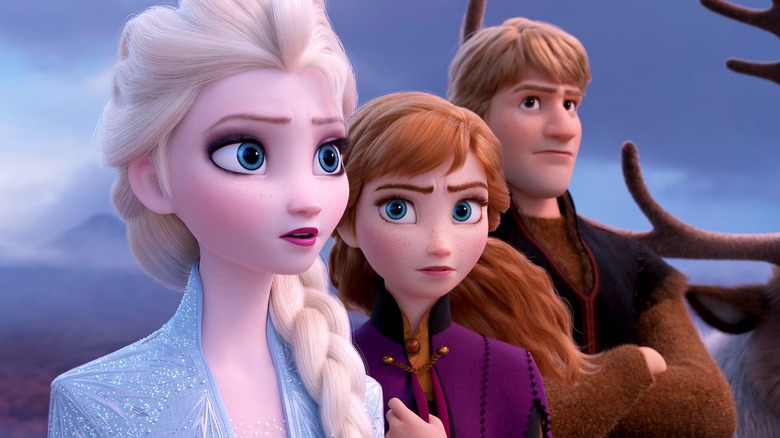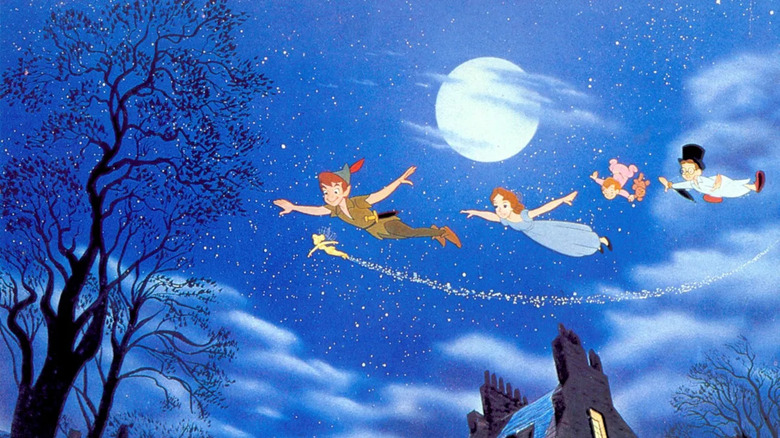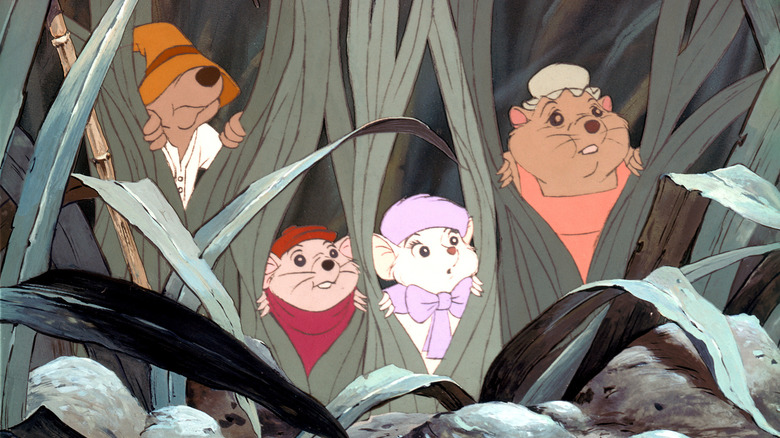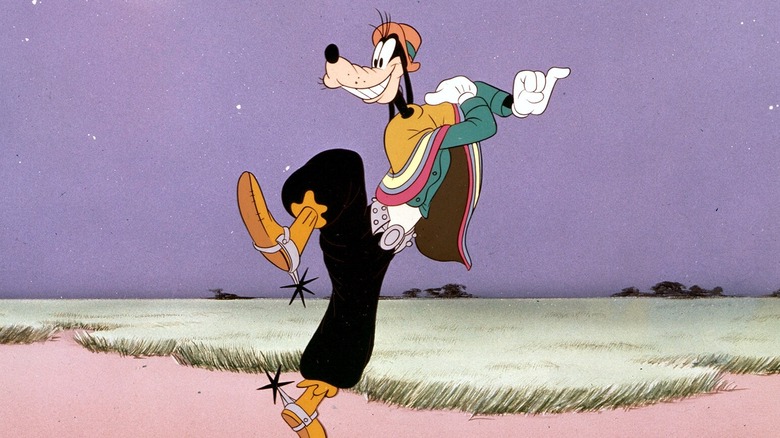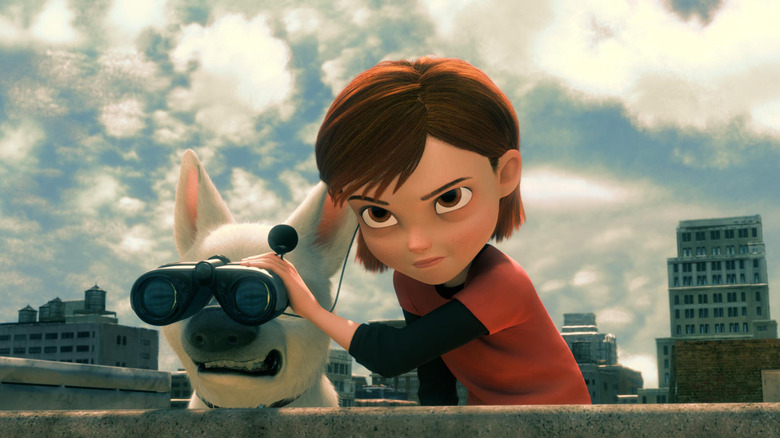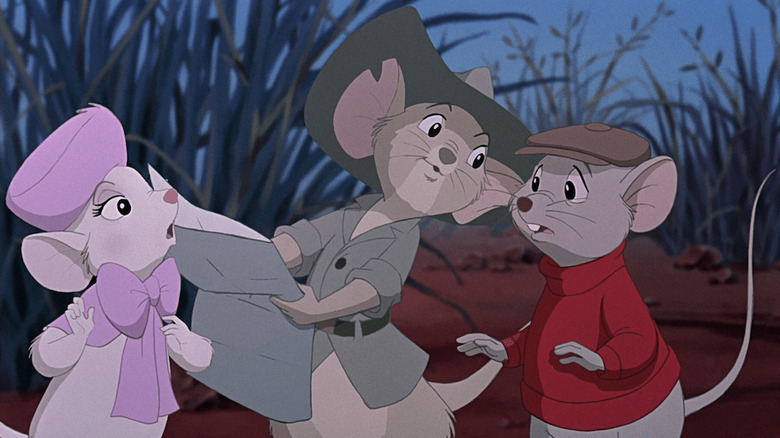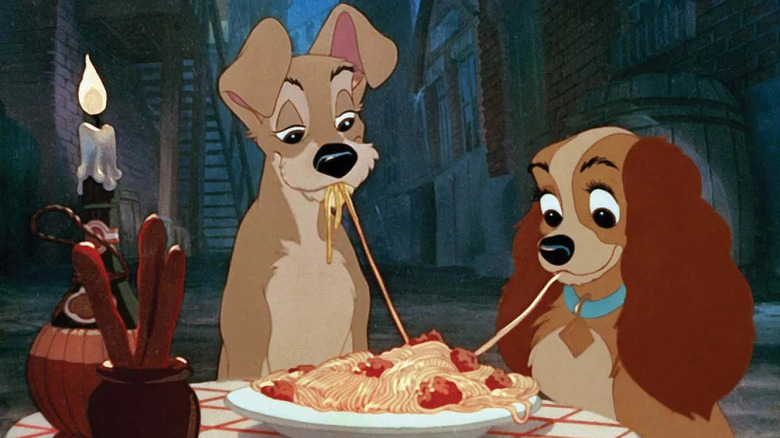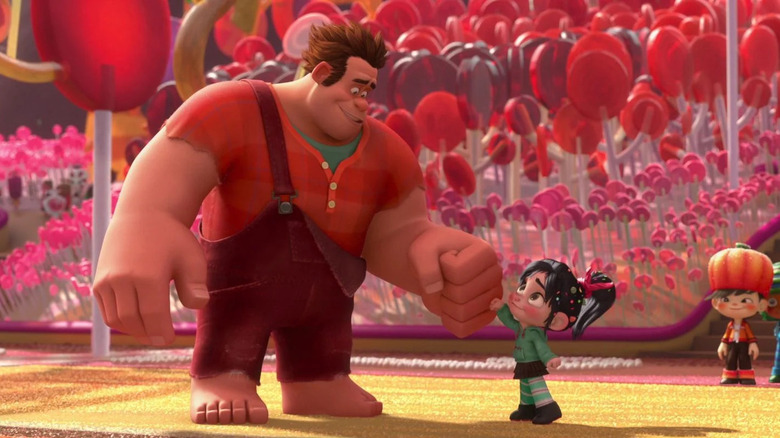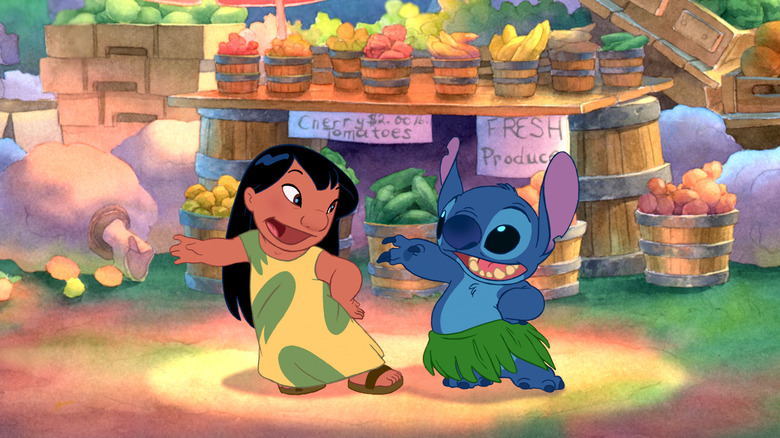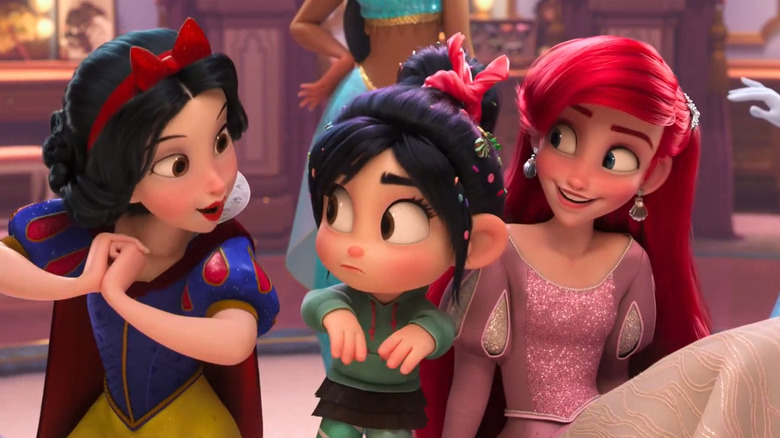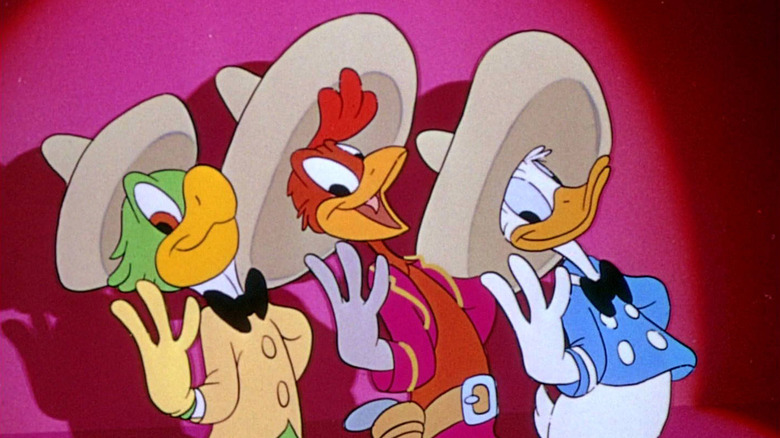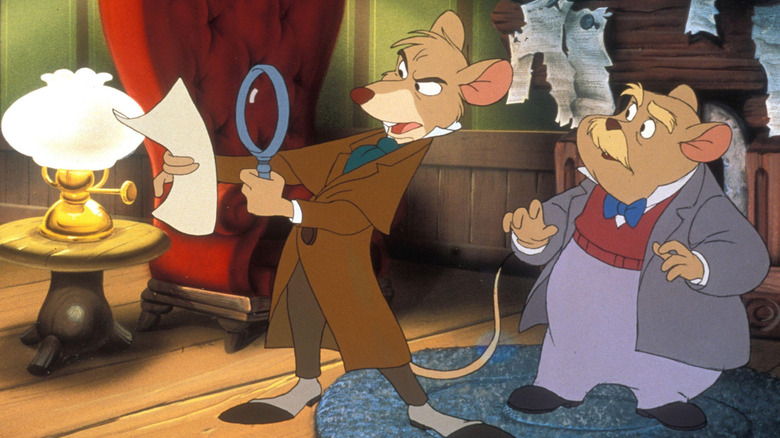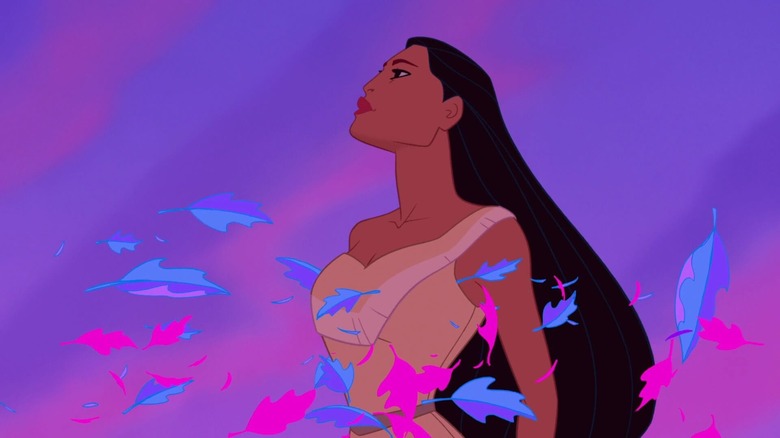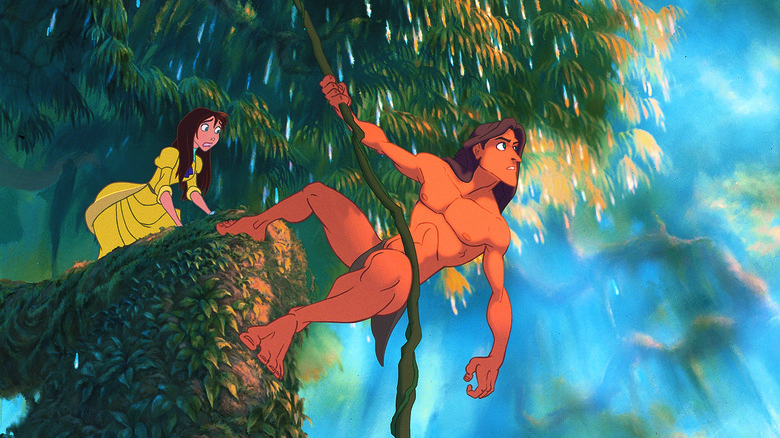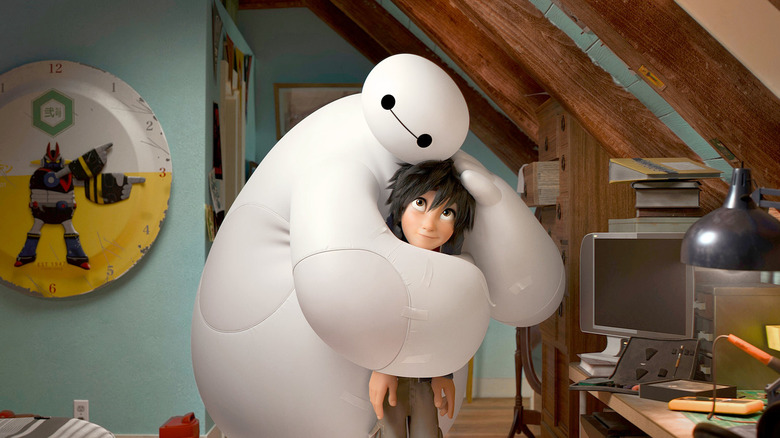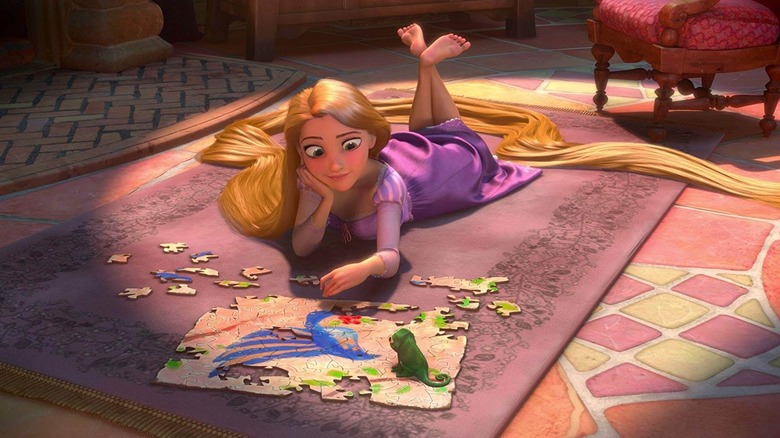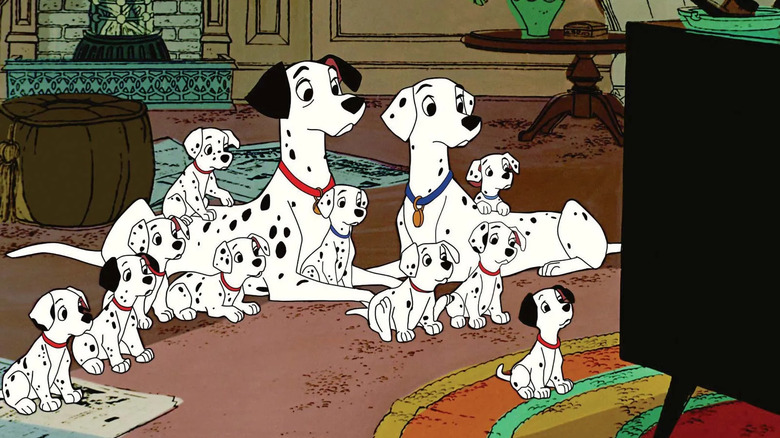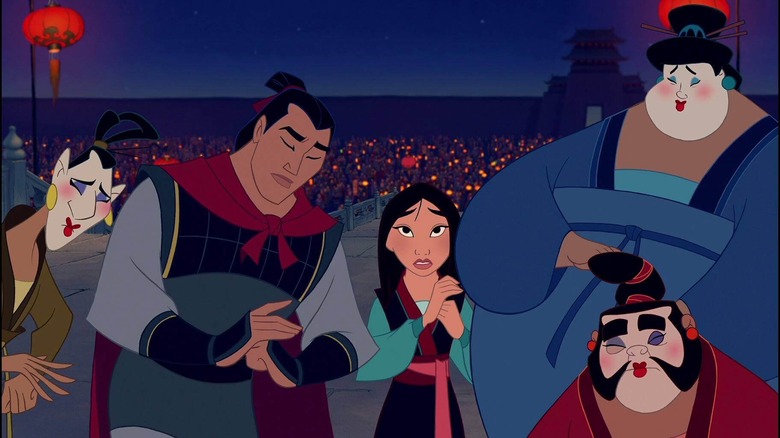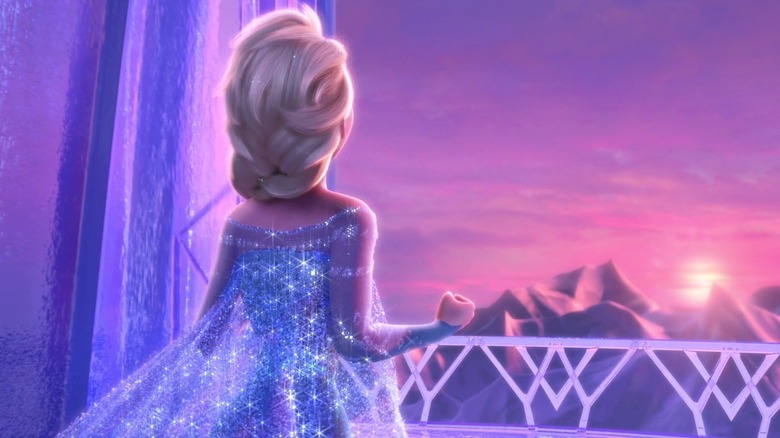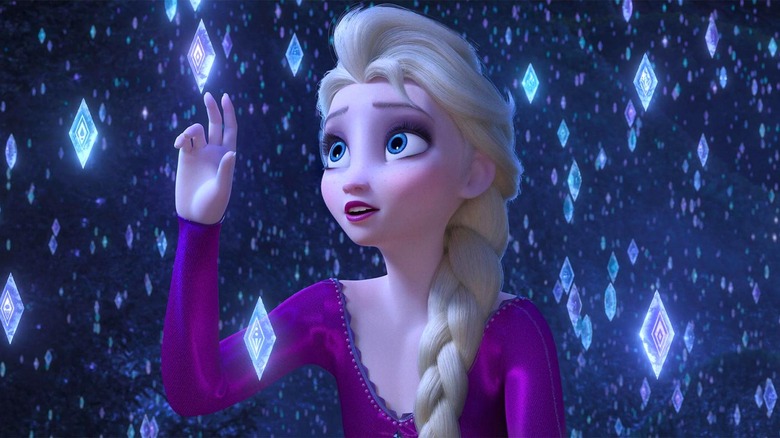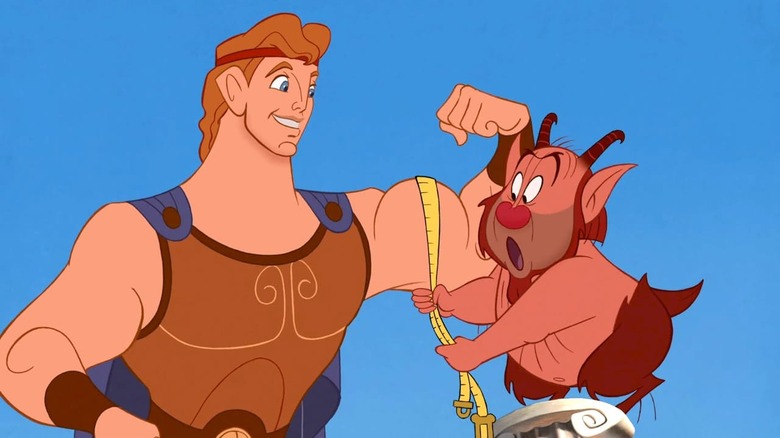All 58 Walt Disney Animation Studios Films Ranked From Worst To Best [Part Two]
(Welcome to Walt Disney Animation Ranked, a three-part series where we're ranking all 58 feature-length animated films released by the Walt Disney Company. This is part two of three.)
What must it have been like to live in a time when feature-length animated films were perceived as folly? Growing up in the era of the Disney Renaissance means that feature animation was always just part of the family-movie landscape. But the Walt Disney Company, now one of the biggest behemoths in all of the corporate world, was once on death's door and hoping beyond hope that a hand-drawn animated film would make a profit. "Snow White and the Seven Dwarfs," once dubbed "Disney's Folly", became a massive worldwide hit, and so a new storytelling medium was born. With the arrival of "Frozen II," Walt Disney Animation Studios has released 58 animated features over 82 years. Consider this the definitive, legally binding (sorry, I don't make the rules, I just follow them) ranking of all of those 58 films.
40. Peter Pan (1953)
Some elements of "Peter Pan" are nigh-unbeatable. A number of the songs are still quite tuneful and catchy, such as the sweet and haunting opener "The Second Star to the Right". Also, the animation is vibrant and colorful, and a fine reminder of how talented the artists at Disney Animation were when given free rein and a decent budget. And Captain Hook is one of the most instantly devious, nastily gleeful villains in the studio's history. But. There's the whole painful business of this film being, like the J.M. Barrie play which inspired it, painfully retrograde and downright offensive in its depiction of women and people of color. In 2019, it's very hard to watch the way Wendy is treated — at one point, a group of mermaids tries to kill her as Peter Pan, the object of their affection, just sits back and laughs — as well as the segment with Native Americans and not wince. The good parts of this movie are great; the bad parts are jaw-dropping.
39. The Rescuers (1977)
There's something intensely sad about the story of "The Rescuers." The setup is simple enough, so simple that it was able to inspire a 1990 sequel: two mice are tasked with rescuing a kidnapped child, and the ensuing film is their adventure in doing so. Here, the child is a helpless little girl named Penny, an orphan kidnapped by the greedy Madame Medusa, who desperately wants a priceless, rare diamond that is lodged in a cave so small that only a child could fit inside to grab it. (It's, shall we say, a convoluted plot.) Bob Newhart and Eva Gabor voice Bernard and Miss Bianca, the heroic mice on the job to rescue Penny. But this film, unlike its sequel, can't get over the starkly sad setup. It's one thing for mice to try and rescue a kid; it's another to realize that Penny genuinely has no other hope of being saved than ... two mice. It's too depressing to be even remotely fun or exciting.
38. Saludos Amigos (1943)
In the early 1940s, as Walt Disney's animation studio was conscripted into duty for making propaganda during the Second World War, one of the tasks in front of his team was strengthening the relationship between the United States and Latin American countries, which could be susceptible to the scourge of Nazism. One of the results of this task was the 1943 feature "Saludos Amigos." It is technically correct to call this a feature film, in that the Academy of Motion Picture Arts & Sciences deems anything longer than 40 minutes a feature. But this movie is just 42 minutes long, comprising four shorts and a framing device of watching Disney and his animators traveling through South American countries like Chile and Peru. Only in the final sequence, "Aquarela de Brasil", do the animators let loose with a colorful fantasia of sights and sounds. It's a wind-up for the eventual follow-up (which we'll get to soon), not a satisfying whole.
37. Bolt (2008)
The pervasive influence of Pixar Animation Studios on Disney's own animated fare became impossible to ignore with the 2008 film "Bolt." The film focuses on a superheroic dog who gradually realizes that he and his owner Penny aren't embarking on various adventures; instead, he's just an actor on a popular television show about a girl and her superheroic dog. Essentially, this is a redo of the story of Buzz Lightyear, with the caveat that the character paired with Bolt the dog — a shifty-eyed cat — is far less charming and far more obnoxious than Sheriff Woody ever was. "Bolt" is a generally tolerable film, though it's easy to wonder what the original version, titled "American Dog" and directed by Chris Sanders of "Lilo & Stitch," would have been like. The movie that wound up being released just can't shake the sense that the basic story was told already, and much, much better.
36. The Rescuers Down Under (1990)
The first sequel from Walt Disney Animation Studios (yes, this is their first sequel of any kind) is surprisingly OK, despite being rife with flaws. The way this film executes the same setup as "The Rescuers" is more successful, in part because the boy being rescued from the clutches of an evil poacher is far from helpless. That is, ironically, also the problem with "The Rescuers Down Under." Where Bernard and Miss Bianca were truly the only ones who could help poor Penny in the original, they feel like afterthoughts in a story where the kidnapped child effortlessly climbs a cliff face, frees a rare eagle, and then flies that eagle to freedom. (This all occurs in the first 15 minutes.) "The Rescuers Down Under" isn't a true high point of the Disney Renaissance, but it's still got some charms and unexpectedly thrilling action sequences.
35. Lady and the Tramp (1955)
This film features what is arguably one of the three or four most memorable images in Disney animation history. The scene in which the two title characters, on a starlit date outside an Italian restaurant, share a plate of spaghetti and end up sharing the same strand of pasta until they're nearly kissing is as romantic as Disney gets. And a good chunk of "Lady and the Tramp" balances a nostalgia for an earlier time — the film is set in a quaint American town in the early 1900s — with its star-crossed romance. But, as with "Peter Pan," there are unavoidably painful stereotypes here, culminating in the cruel Siamese cats that are an unnecessary diversion into racism. This film has its charms, but they're often canceled out by other creative choices.
34. Wreck-It Ralph (2012)
Some things, you just can't move past. For this writer, it's the utter lack of logic in "Wreck-It Ralph" and its third-act bad-guy reveal. (In that twisty moment, we learn that the seemingly avuncular leader of the candy-coated racing video game Sugar Rush is actually a selfish racer from an older arcade game who somehow managed to hide out in Sugar Rush, and disguise himself, and remove the memories of the other characters in Sugar Rush, without anyone knowing except for the part where he removed the other characters' memories. Of course.) The story preceding this reveal is perfectly OK, but it's the umpteenth buddy comedy from Disney and Pixar at a time when such stories didn't feel quite as fresh. The sequel isn't a whole lot better, but the relationship between Ralph and Vanellope Von Schweetz is more fleshed out than it is here, and more is done with the world of the Internet than is done with the world of sentient video-game characters.
33. Lilo & Stitch (2002)
Like Stitch itself (himself?), "Lilo & Stitch" is the kind of movie that you either really love or really ... don't. Now that we're in an era of post-hand-drawn animation, it's easy to be nostalgic for this 2002 film, animated partially via watercolor. The story of a prickly little Hawaiian girl who encounters an equally prickly escaped alien prisoner is unquestionably distinctive, and hardly like the typical Disney animated film that became so dominant in the 1990s. Yes, there's a female lead, but she's genuinely feisty (where other female leads adopt feistiness as if it's a buzzword). Yes, there's music, but it's all in the form of ... Elvis Presley songs. And so on. "Lilo & Stitch," on paper, is the kind of film Disney should keep making, even if the execution renders the final result somewhat distant and unemotional.
32. Ralph Breaks the Internet (2018)
The friendship between Wreck-It Ralph (John C. Reilly) and Vanellope Von Schweetz (Sarah Silverman) serves as the foundation for "Wreck-It Ralph," but it doesn't take long in the 2018 sequel "Ralph Breaks the Internet" for that friendship to be interrogated and deemed not terribly healthy. Vanellope is a vastly more interesting character in this follow-up, as it becomes clear that Ralph's dreams and hers don't match, and that's OK. Of course, as the title implies, it takes Ralph a little longer to reach that conclusion (though it's not like the Disney-depicted version of the Internet is actually as bad as ... y'know, the actual Internet). There's a bit more fun to be had in this sequel, specifically in the depictions of the "Grand Theft Auto"-inspired world Vanellope finds so appealing.
31. The Three Caballeros (1944)
And here lies the follow-up to "Saludos Amigos." "The Three Caballeros" ostensibly continues the goal of "Saludos Amigos," strengthening the bond of the U.S. and Latin America, in a much more direct way. Here, the setup is that it's Donald Duck's birthday (because ... sure, why not) and he's got some presents to sift through. Eventually, he meets up with the other two characters in the title (though not instantly). He, Jose Carioca and Panchito Pistoles go on a more detailed animated tour of Mexico and Latin America, in a film that's still not quite as wonderful as it could be, but pays off on the charm of the final segment of "Saludos Amigos." Here, sequences like "Baia" and "Donald's Surreal Reverie" imply that Disney's animators had not lost their gorgeously hallucinatory touch in crafting unforgettable images, even if the film as a whole isn't at the same level.
30. The Great Mouse Detective (1986)
If you love modern Disney animation, don't forget that it all started here with an unassuming adaptation of a Sherlock Holmes-style sleuth. This one, of course, is a mouse named Basil of Baker Street. But "The Great Mouse Detective," the film all about Basil and his exploits, is modestly charming. Co-directed by, among others, John Musker and Ron Clements (who would go onto direct a number of better films we'll mention soon), "The Great Mouse Detective" is a fairly slight adventure with rough animation. But the film had potential, and it also boasted a hilariously nasty villain, the odious Ratigan voiced by horror legend Vincent Price. "The Great Mouse Detective" is far from perfect, but a sign of what Disney animation could once again accomplish creatively.
29. Pocahontas (1995)
How far Disney Animation has come, and how quickly they made changes. It would be wrong (to say the least) to suggest that "Pocahontas" was a truly faithful, respectful, and honest version of the supposed star-crossed romance between English settler John Smith and Native American woman Pocahontas at the dawn of the Western settlement of the New World. There are plenty of examples of how the Disney film deliberately distorted the truth in favor of a more dramatically interesting tale. But coming just three years after the inflammatory and controversial depiction of the Middle Eastern community in "Aladdin," it's almost whiplash-inducing to see "Pocahontas."
The 1995 film is striking in its impressionistic design, boasts some wonderful songs and a great Alan Menken score, and is vastly more respectful to the Native American community than past Disney films would have suggested. The key romance, sadly, isn't nearly as tender as it ought to be, and its attempts at comedy are baffling to say the least. But the overall effect of the film is more complex than expected.
28. Tarzan (1999)
It's not that "Tarzan" is a bad film — its blend of computer and hand-drawn animation in depicting the vine-swinging hero in the trees is alone enough to recommend it. But "Tarzan" had the misfortune of arriving at the tail end of the Disney Renaissance, giving off the vague vibe that audiences had seen this all before, just with slightly revised character names and tropes. The story of Edgar Rice Burroughs' hero is one of the most familiar in modern popular culture, having inspired plenty of TV and film adaptations. While this "Tarzan" has some charm, specifically in its less retrograde depiction of the Tarzan-and-Jane relationship (thanks in no small part to Minnie Driver's winning voice performance), its presence was less daring and more familiar by 1999.
27. Big Hero 6 (2014)
When Disney bought Marvel, it was only natural to wonder when, not if, the comic-book company would be represented among Disney's animated feature canon. In 2014, the result of that unexpected marriage arrived. "Big Hero 6" was inspired not by one of the most obvious or ultra-famous Marvel superheroes. Still, its depiction of a hybrid version of San Francisco and Tokyo, as experienced by a grieving teenager who uses his dead brother's healthcare robot to solve his murder, is quite compelling and colorfully detailed. "Big Hero 6" has some of the same kinds of storytelling stumbles the Marvel Cinematic Universe has too (and, like a lot of MCU films, a real snooze of a villain), but the core relationship between Hiro and his new robot pal Baymax is more emotionally complex than most MCU films can boast.
26. Tangled (2010)
The fable of the impossibly long-haired Rapunzel is one of the most recognizable in Western literature, but it took Disney a number of false starts and an extended development process to get its cinematic version off the ground. Finally, after ditching a hand-drawn version in favor of a wholly computer-animated film, they delivered the mildly charming "Tangled." That title, coupled with the narration by Rapunzel's male foil Flynn Rider, makes clear that this movie wasn't intended only for girls. (This intention is driven by the often ridiculous marketing notion that boys refuse to see movies about girls, but girls will see just about anything.) "Tangled," despite its silly title, is fun, well-paced, brightly animated and designed, and features another nastily passive-aggressive villain (coming after the malevolent Frollo in "Hunchback of Notre Dame"). Yet it's still held back by seeming like a bit of a PR sop to appeal to boys.
25. One Hundred and One Dalmatians (1961)
At the time, "One Hundred and One Dalmatians" felt almost revolutionary for the Walt Disney Company, for a couple of reasons. This feature was the first Disney animated entry set in the present day. And second, the animation style was a radical shift from the clean lines and richly detailed design of past entries. Both to push feature animation in a direction that might please animators who wanted to see their line work more radically represented, and to save on the costs of drawing ... well, 101 spot-covered dalmatians, this film featured Xerography, an animation technique created by the pioneering animation wizard Ub Iwerks, allowing easier copying of animation work from frame to frame. The resulting visual experience is rougher than other Disney films; what does work in the film is its adventurous spirit as the eponymous dogs escape the clutches of one of the most terrifying villains in Disney history, Cruella De Vil. It's not a subtle film, but its heights are unforgettable.
24. Mulan (1998)
There's an unspoken awareness throughout the Disney Renaissance that, to tell stories that capture the imagination more than 50 years after the studio's first feature film, animators would have to think beyond their upbringings and Western heritage. Thus, films like "Pocahontas" and "Mulan" were born, the latter of which was both charming and struggled to escape the Disney mold. Inspired by a story of a young Chinese woman impersonating a man in the army, "Mulan" is, on the surface, a compelling well-told story, though our heroine's comic-relief sidekick Mushu (voiced by Eddie Murphy, a few years before he'd be the Donkey in "Shrek") feels ported over from earlier Renaissance films. The action elements of "Mulan" stand up more than 20 years later, even if the comedy doesn't.
23. Frozen (2013)
You're just going to have to let it go that this film isn't higher on the list. "Frozen" was an out-of-the-box phenomenon in the late months of 2013, in its loose take of "The Snow Queen." Here, the young woman Elsa (Idina Menzel) grapples with her ability to shoot ice out of her hands as she ascends the throne of Arendelle, eventually hiding away after plunging the country into a deep, eternal snow. It's up to her plucky sister Anna (Kristen Bell), plus a sentient snowman, a well-meaning ice salesman, and others to help make things right again. Where "Frozen" suffers is in its story — for a film ostensibly about the bond between two sisters, Anna and Elsa barely share any screen time together, in place of the obnoxious Olaf (#sorrynotsorry), hectoring trolls, and more. But yes, "Let It Go" is pretty good.
22. Frozen II (2019)
It's next to impossible to imagine this movie somehow surpassing six years' worth of expectations. And in some ways, "Frozen II" does fall a bit short of the original "Frozen." The mythology surrounding Queen Elsa and her special powers of ice and snow is given more attention in the sequel without making a whole lot of sense. As with the original, "Frozen II" is, at its best, an emotional experience where logic doesn't enter into play. Quite simply, the emotional highs are more effective here, hence this film's slightly higher placement. On the whole, the songs are consistent and solid — no, not even "Into the Unknown" can hope to top "Let It Go" for sheer entertainment value, but there's also no song here as terrible as "Fixer Upper". (And the trolls are barely in this one, which is also a win.) "Frozen II" does represent a huge step forward for Disney's animators — whatever this film's story problems are, it looks fantastic in its epic-style scope and in the small details. Even a drop of water has depth and clarity of vision in this one.
21. Hercules (1997)
Sometimes, the best thing a Disney movie can boast is its villain. "Hercules," from directors John Musker and Ron Clements, has a tone of hipper-than-thou snark throughout, best represented by its bad guy Hades, voiced marvelously by James Woods. Channeling the slimiest Hollywood agent, Woods makes his Hades as sleazy as he is slick, as he wheels and deals his way through ancient Greece, attempting to conduct a "hostile takeover" of the human race. Hercules himself isn't a terribly fascinating lead character, but the big lug's romantic interest, Meg (voiced by the charming Susan Egan), is a cagier, sharper and more screwball female character than most Disney films had ever seen. Add to that gospel-infused songs, loopy humor, and striking animation, and it's almost not a problem that Hercules himself is a bit of a letdown.
